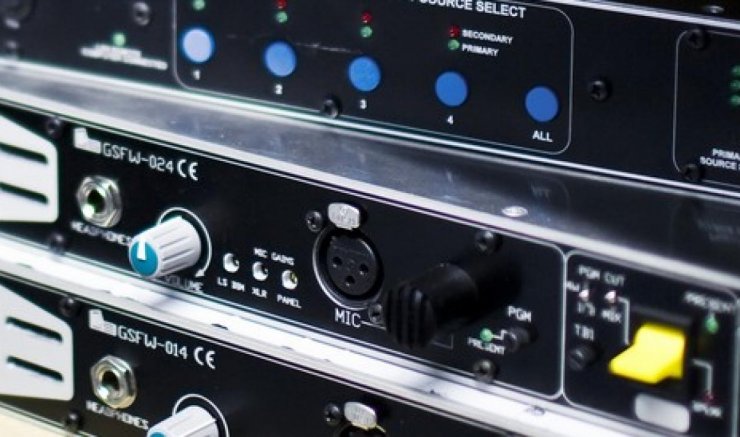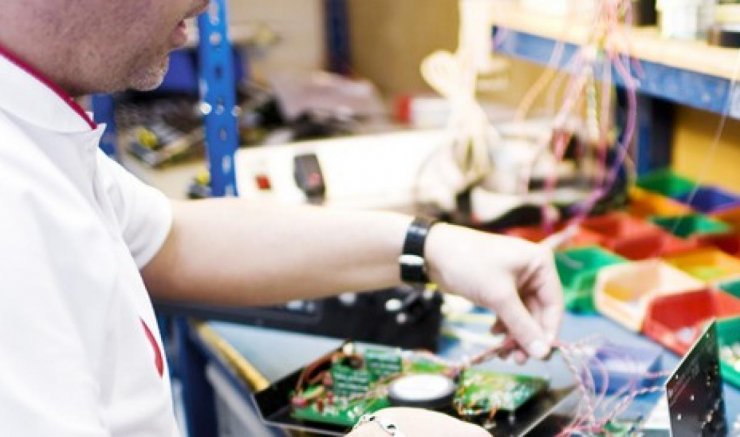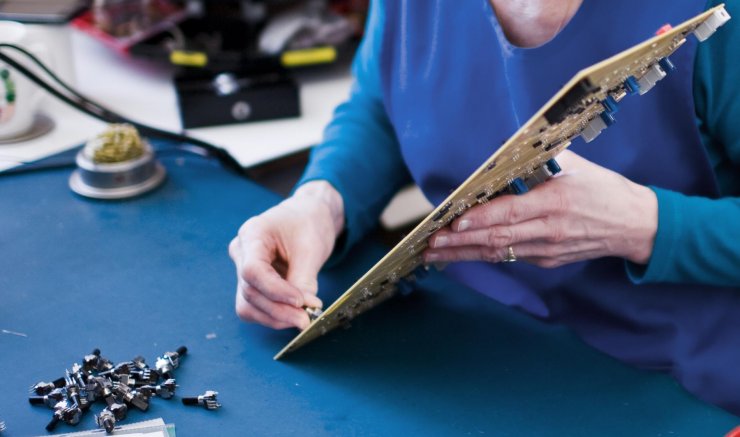Login / Quote Area
0 items in your quote basket

UK : 01622 753662
International : +44 1622 753662
Login / Quote Area
0 items in your quote basket

Call
+44 1622 753662




What type of commentary system do I need for interviewing?
A portable unit for interviewing and roaming is the belt pack GS-CU004 or Belt pack Dante.AES67 Vita Mini. They clip on your belt and provides you with a talkback circuit.
Which system is best suited to off tube work?
Any of our desk top or rack mount systems can perform this. The most frequently used is the GS-CU001B which is a great all rounder. The Inferno and Minferno are also popular Dante/AES67 units.
We carry lots of coaxial cable on our truck, and often we are a long way out from the commentary area. Which of your systems gives the best range between commentators' box and base station?
The Glensound Digital Commentary GDC6432 can use fibre as a link and will give you many kilometres of range. The Dante/AES67 Paradiso, Paradiso Lite, Inferno and Minferno also have fibre connections for long distance links.
I know that traditional analogue coaxial systems have a certain amount of noise introduced on the link. If I want a two part system, but want to keep the audio as high quality as possible, what are my options?
The GDC 6432 digital system. This will maintain 24 bit 48kHz audio even on a 400m coaxial link. All of the Dante/AES67 systems will also give you high quality uncompressed audio.
Commentators are not always the most technical of people (we chose our words carefully!). Is there anything I can do to remote control their commentary box?
Our Paradiso and Paradiso Lite can be remote controlled on a local or wide network using GlenController. The Inferno and Minferno have built in web servers for control across the open internet.
How important is the microphone gain level range?
The gain range of the mic input must be wide enough to adequately adjust for the input level of the microphone being used. On some units there are switches to adjust the gain range, but most will accommodate the normal range of dynamic and condenser microphones. Any unit can be preset to required gain ranges free of charge. Just let us know what mic you intend to use.
Should I be worried about headroom figures?
In short, YES! This is one of the most important aspects of any commentary unit. A commentary unit must have headroom of at least 32dB. This ensures that peaks can be accommodated without clipping on the outputs. If you do not have headroom of at least 32dB you do not really have a proper commentary unit, and an excited commentator shouting when a goal goes in may well clip.
How many commentator positions are usually required?
The majority of events usually have 2 - the main and co-commentator. A third is also quite popular, either as a sports specialist (an ex player for example), or for a producer. Some sporting events require numerous inputs from specialists, statisticians and all manner of others, as well as the main commentators. For these events we have the GS-GX3 commentary mixer, and the Talent Box that links together for numerous commentary inputs.
Why would I need a producer input?
Having a producer at the commentary box allows them to monitor all the incoming sources and have access to the talkback circuits, so it is a common combination. In some events a producer is essential, that is why some Glensound units have dedicated producer units separate from the commentators.
Why do you have mixed programme outputs and direct mic outputs?
In the simplest operation, the programme mix happens on the commentary unit itself and a programme output is produced ready for broadcast. In larger events where there is a main audio mixer, the engineer would rather have direct separate control of the commentary audio. In this scenario, the commentators' audio is taken from the individual direct outputs and brought onto the audio mixer as separate channels. Now the engineer mixes the commentary on the audio mixer.
Is a DC power input important?
An external DC power input has two functions. One is as a backup. In certain events, it is an extra level of security to have a battery connected and on standby, should the main power fail. Secondly, it is a direct power source, so if mains power is not available your unit can be powered from an external 12v DC battery source.
Why do I need a commentary system to be in two parts?
On an outside broadcast, it is common to have a broadcast vehicle parked outside a sports ground with the commentary booth inside the ground. Connecting all the commentators' mics, talkbacks, and outputs independently would result in a lot of cable runs, often at distances of up to 500m. Using a suitable Glensound system, a single cable will connect all bi-directional audio circuits and provide power to the commentary box too. It is a much more elegant solution.
What are the differences between coax, multi-wire, copper Ethernet, and fibre Ethernet links in the two part commentary systems?
Coax cable is readily available on an outside broadcast vehicle and it is very rugged. As well as carrying the audio, data and power can also be passed along the same cable. However, analogue co-axial systems do not have the same audio quality as direct multi-wire audio links, digital coaxial, or Ethernet links. Multi-wire systems preserve audio quality and offer great performance figures. The DEF32 systems require the commentators' unit and the commentary control unit to be in the same location and uses very large cable. The CAT5 systems allows a link distance of about 150m, but the network cables used are not as robust or reliable as coax. Fibre systems offer the best audio quality and the longest possible link distances. Fibre is not as tough as a coax link and it does not carry power, so commentary units on a fibre link system need to be powered locally.
Are the compressor/limiter systems necessary?
Critical, that is why all Glensound commentary systems have a carefully designed compressor/limiter system. Sports commentary has to manage audio inputs from whispered tones of snooker commentators, up to the screams of football commentators. The commentary system must manage these varying input levels and output low noise, undistorted audio. The compressor/limiter is a very important part of this quality preservation chain.
Why do the commentators need so many sources to monitor?
The more relevant information that the commentator receives, the better he will be able to perform his job. If he receives the programme audio feed as broadcast, he will hear if any problems occur. If he hears the international sound of the stadium crowd he can react to it in the appropriate way. If he receives advice on mic levels or popping from the engineer he can take corrective action. If he receives off air instruction from his co-ordinator he can hit his cues and be aware of timings. If he has a local input from a sports statistician he can appear expert on the sport as if he knew it himself. All of these sources require a multiple input headphone mixer, and they will ultimately result in a better commentary production.
Can I modify one of your standard units?
Glensound was born out of making and developing custom designs. If you requirements differ from what we have, please let us know and we will design the unit that you want, providing block diagrams and panel views in advance so you can really see what you will get and how it will perform.
© Glensound
The Design Buildings, 6 Brooks Place, Maidstone, Kent, ME14 1HE, UK.
Tel UK : 01622 753662 | Tel international : +44 1622 753662 | Email : sales@glensound.com